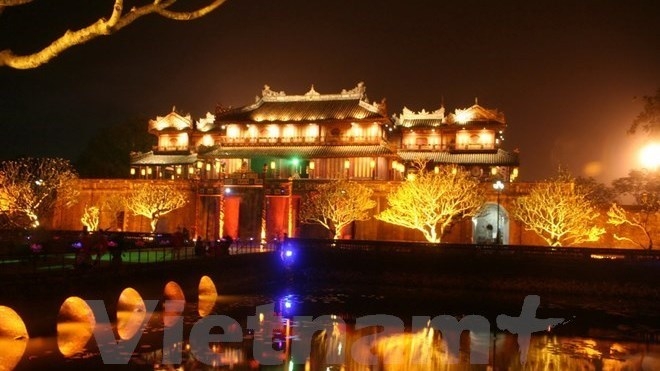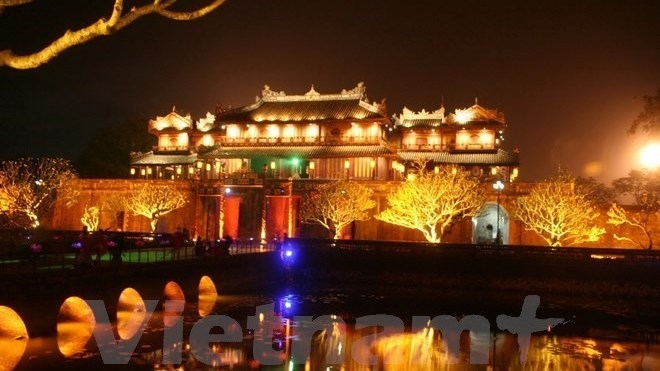



Hue imperial city by night (Photo: VNA)
The
Republic of Korea ranked first in terms of the number of holidaymakers visiting
Thua Thien-Hue, making up 26 percent of the total number.
In the
reviewed period, the province served a total of 2.78 million visitors. The Hue
Relics Preservation Centre alone welcomed 2.4 million visitors, up 18.55 percent
from the same period last year.
In
September 2017, the provincial Department of Tourism and Traveloka Vietnam
Company signed a Memorandum of Understanding on tourism development, which aims
to connect accommodation establishments, airlines and potential customers.
The
locality also signed a cooperation agreement with the national flag carrier
Vietnam Airlines to promote Hue at domestic and foreign tourism trade fairs, in
addition to increasing flights and launching new routes to the imperial city.
In 2017,
Thua Thien-Hue province expects to attract over 3 million tourists, of which
international visitors will make up 40-45 percent, raking in more than VND3
trillion (US$131 million).
Hue, which
was the imperial capital of Vietnam for hundreds of years, is home to five
heritages recognised by UNESCO, which are the Hue ancient citadel relic complex
- a World Cultural Heritage site; Nha Nhac (Hue royal court music) - an
intangible cultural heritage item; Nguyen Dynasty’s wood blocks - a documentary
heritage item; Nguyen Dynasty’s Chau ban (royal administrative documents) -
part of the Asia-Pacific Register of UNESCO’s Memory of the World Programme;
and literature on Hue royal architecture - a documentary heritage.
The Hue
imperial citadel relic ranked second among the top seven tourism attractions of
Vietnam in 2017.